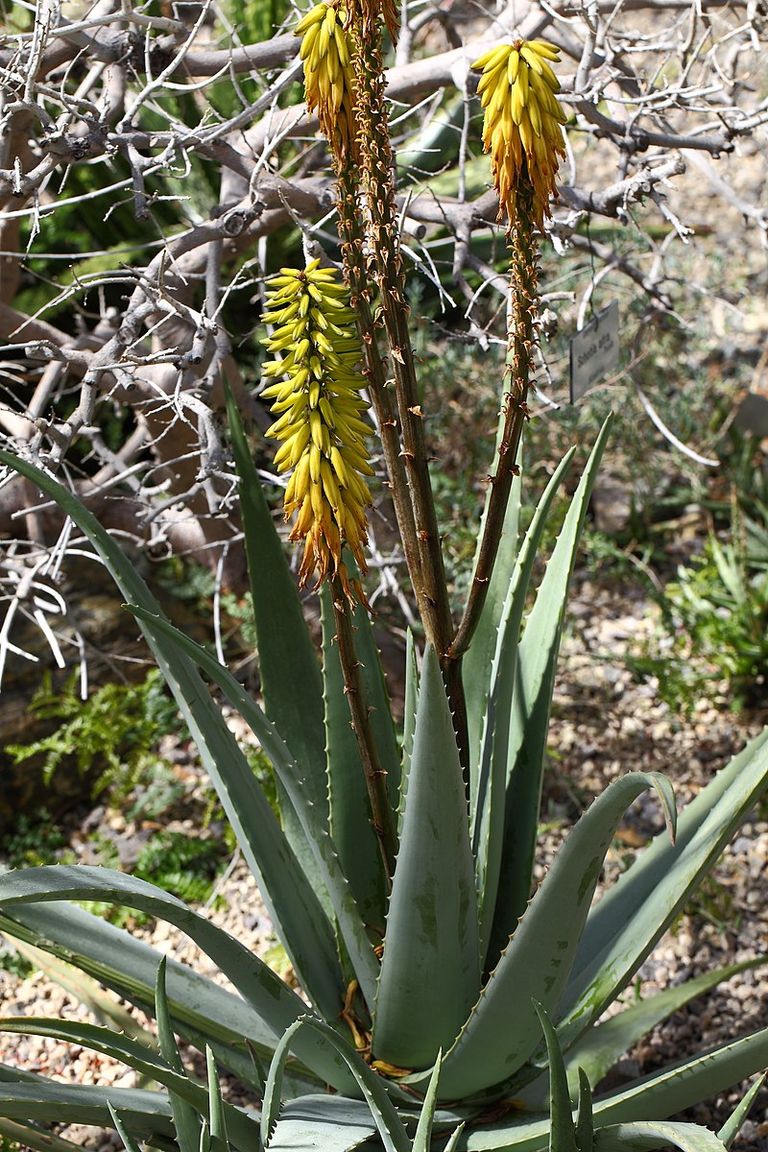
The first records of the nourishing sap of Aloe Vera were made almost 6000 years ago in Egypt. It was considered a plant whose "blood" provided beauty, health and immortality. Both Cleopatra and Nefertiti appreciated the beneficial juice and used it in their daily beauty care. The use of Aloe was considered to be a desire for bodily beauty.
Corpses were embalmed with Aloe - for its bactericidal and fungicidal effect. It was believed that by preventing the decomposition of the body, eternal life would be achieved - both physical and spiritual. The Aloe plant was considered to be the "plant of immortality". The "Eber Papyrus" (1550 BC) mentions its anti-inflammatory and analgesic effects.
Los primeros registros acerca de la savia nutritiva de Aloe Vera se realizaron hace casi 6000 años en Egipto. Se consideraba una planta cuya "sangre" proporcionaba belleza, salud e inmortalidad. Tanto Cleópatra como Nefertiti apreciaban el jugo benefactor y lo utilizaban en sus cuidados diarios de belleza. El uso de Aloe era considerado como el afán por la belleza corporal.
Los cadáveres se embalsamaban con Aloe - por su efecto bactericida y fungicida. Se creía que al impedir la descomposición del cuerpo se alcanzaría la vida eterna - tanto corporal como espiritual. La planta de Aloe se tenía por "la planta de la inmortalidad. En el "Papiro Eber" (1550 a.C.) se mencionan sus efectos anti-inflamatorios y analgésicos.
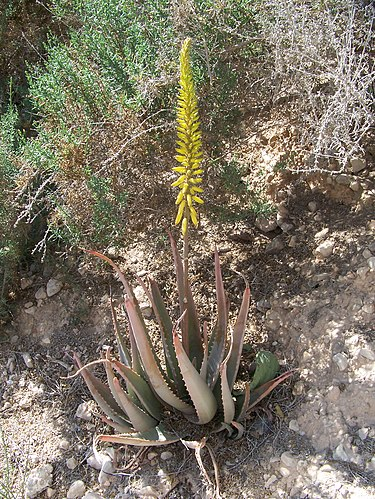
Mesopotamia.
Aloe was already mentioned in writing on clay tablets from Nippur (2200 BC). Its properties for cleansing the intestinal tract were known. In the way things were understood at that time, illnesses were always interpreted as a sign of the devil's penetration into the body. Only a divine plant could drive away demons. So, ALOE was considered a divine plant.
En las tablas de barro de Nippur (2200 a.C.) ya se hizo mención escrita de aloe. Sus propiedades para limpiar el tracto intestinal eran conocidas. Tal y como se comprendían las cosas en aquellos tiempos, las enfermedades eran interpretadas siempre como una señal de la penetración del diablo en el cuerpo. Solo una planta divina podía ahuyentar los demonios. O sea, ALOE era considerada una planta divina.
Alexander the Great. / Alejandro Magno.
In Asian countries, the aloe plant was already an integral part of medical treatments. Alexander the Great (356 - 323 BC) had his warriors' wounds treated with aloe juice and had it planted in his chariots so that he always had fresh supplies during his campaigns. It is said that Aristotle persuaded Alexander the Great to conquer the island of Socotra in order to gain possession of the aloe plantations - this way there would be enough material to care for wounded warriors.
En los países asiáticos, la planta de aloe ya constituía una parte integrante de los tratamientos médicos. Alejandro Magno (356 - 323 a.C.) mandaba curar las heridas de sus guerreros con el jugo de aloe y disponía que se plantara en los carros de combate para tener siempre suministros frescos durante sus campañas. Dicen que Aristóteles convenció a Alejandro Magno para conquistar la isla Socotra con el fin de hacerse con las plantaciones de aloe - de este modo se disponía de suficiente material para cuidar de los guerreros heridos.
Dioscorides. / Dioscórides.
The Romans also benefited from the experience of the Egyptians and Greeks with the beneficial effects of the aloe plant. During the reign of Emperor Nero, around 50 AD, Dioscorides, a natural physician, lived throughout the East. He wrote a multi-volume treatise on pharmacology, including many recipes for the treatment of hundreds of diseases. In the extensive chapters on the positive effects of plants, he describes the aloe plant as one of his favourite plants. He recommended aloe juice for the treatment of wounds, stomach and intestinal complaints, gum inflammation, joint pain, itching, sunstroke, acne, alopecia, etc.
También los romanos aprovecharon la experiencia de egipcios y griegos con los efectos beneficiosos de la planta de aloe. Durante el reinado del emperador Nerón, en torno a 50 d.C., vivió el médico naturalista Dioscórides, que viajaba por todo Oriente. Este médico escribió un tratado de farmacología en varios tomos, incluyendo muchas recetas para el tratamiento de cientos de enfermedades. En los amplios capítulos sobre el efecto positivo de las plantas, describe la planta de aloe como una de sus plantas preferidas. El recomendaba el jugo de aloe para el tratamiento de heridas, en caso de molestias estomacales e intestinales, para inflamaciones de las encías, dolores articulares, prurito, insolación, acné, alopecia, etc.
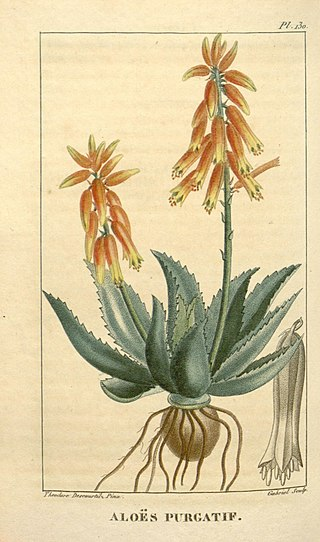
Chinese medicine. / La medicina china.
Already in the time of Marco Polo's travels, Chinese culture was aware of the benefits of Aloe in medical treatments. In the book of healing Shi-Shen it is described as "Middle of Harmony" - a central value of life in the Middle Kingdom. A similar assessment was made in Japan: it was revered as "the royal plant", its juice was eaten and drunk, and the Samurai used it as an ointment.
Ya en tiempos de los viajes de Marco Polo, la cultura china conocía los beneficios de Aloe en los tratamientos médicos. En el libro de curaciones Shi-Shen es descrita como "Medio de la Armonía" - un valor central de la vida en el Reino del Medio. Una valoración similar se hizo en Japón: era venerada como "la planta real", se comía y se bebía su jugo; los Samurai la utilizaban como ungüento.
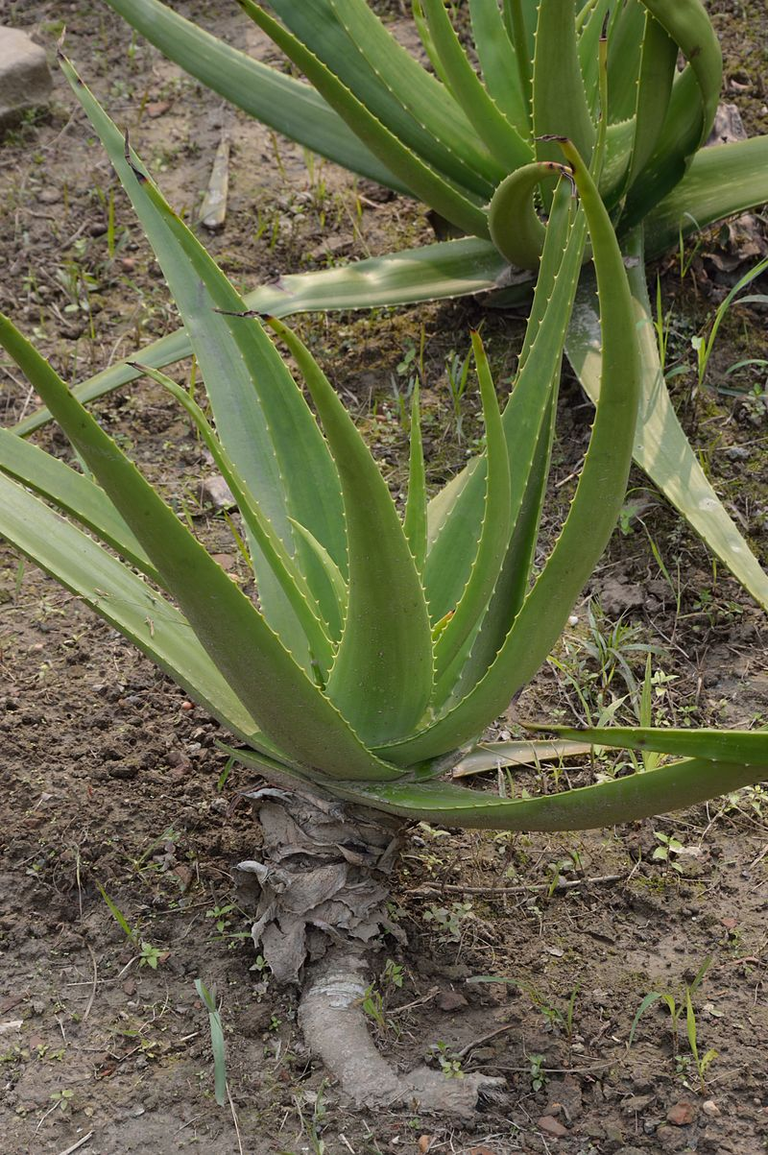
Colon. / Colón.
New worlds were discovered with Aloe Vera: Christopher Columbus carried pots of Aloe plants on his ships to cure his crew's wounds with their juice.
In the 16th century, Spanish Jesuit monks - still famous today for being the most knowledgeable about plants and their healing effects - collected the wild Aloe plant and propagated it in places where it was still unknown. The Mayan Indians gave the juice of this desert plant its name: "Fountain of Youth".
Con Aloe Vera se descubrieron nuevos mundos: Cristóbal Colón llevaba en sus barcos macetas con plantas de Aloe para curar con su jugo las heridas de sus tripulantes.
En el siglo 16 los monjes jesuitas españoles - hasta hoy famosos por ser los más entendidos en plantas y sus efectos curativos - coleccionaban la planta silvestre de Aloe y la propagación en lugares donde aun era desconocida. Los indios maya dieron nombre al jugo de esta planta del desierto: "Fuente de Juventud".
Swedish Bitters. / Amargo Sueco.
The elixir of life of the Swedish physician Dr. Yernes is also well known. He died at the age of 104 after a riding accident. The recipe for the elixir was a family secret for centuries. This Swedish elixir, which is known today as "Swedish herbs", has more or less the same composition as then, namely: one ounce of Aloe Socotra, an equal portion of Zedoaria, gentian root and the best saffron, a portion of rhubarb root, a portion of the fungus Laricifomes officinalis , a portion of Venetian molasses, mix everything with a pint of good brandy and let it stand for ten days and finally filter it. The Swedish physician assured "every day 7 to 8 drops mixed with wine, tea or broth, and you will live for many years without needing bloodletting or doctors. The wonderful thing is that it works for everything."
También es conocido el elixir de la vida del médico sueco Dr. Yernes, quien murió a los 104 años tras un accidente de equitación. La receta del elixir fue durante siglos un secreto de familia. Este elixir sueco que hoy se conoce por el nombre de "hierbas suecas" tiene más o menos la misma composición que entonces, a saber: una onza de Aloe Socotra, una porción a partes iguales de Zedoaria, raíz de genencia y el mejor azafrán, una porción de raíz de ruibarbo, una porción del hongo Laricifomes officinalis, una porción de melaza veneciana, mezclar todo con una pinta de buen brandy y dejar reposar durante diez días y finalmente se filtra. El médico sueco aseguró "todos los días de 7 a 8 gotas mezclados c on vino, té o caldo, y usted vivirá muchos años sin necesidad de sangrados o de médicos. Lo maravilloso es que vale para todo".
Sanskrit. / Sánscrito.
In Sanskrit, Aloe Vera is called Ghrita-Kumari. Kumari means "girl" in Sanskrit. It was believed that this plant gave women the energy of youth and had a regenerative effect on the feminine nature. In Indian Ayurvedic medicine, there are various ways of using Aloe Vera, for example as a rejuvenating agent, for menstrual disorders and to stabilise the circulation. In Ayurveda, it is considered to be the plant that balances Pitta, Kapha and Vata - one of the few plants.
En sánscrito Aloe lleva el nombre de Ghrita-Kumari. Kumari significa en sánscrito "niña". Se creía que esta planta daba a las mujeres la energía de la juventud y que tenía un efecto regenerador de la naturaleza femenina. En la medicina ayurvédica de la India se encuentran diversas posibilidades de aplicar Aloe Vera, por ejemplo como medio rejuvenecedor, contra las molestias menstruales y para estabilizar la circulación. En ayurveda se la considera como la planta del equilibrio entre Pitta, Kapha y Vata - como una de las escasas plantas.

Hildegard von Bingen.
Around the year 1100, that is, in the High Middle Ages, the Benedictine nun Hildegard von Bingen described Aloe as a remedy for jaundice, stomach ailments and migraines, and against cavities and suppurating ulcers.
Entorno al año 1100, o sea, en la Alta Edad Media, la monja benedictina Hildegard von Bingen describe Aloe como remedio para la ictericia, enfermedades estomacales y migraña, contra caries y úlceras supurantes.
Anthroposophical medicine. / La medicina Antroposófica.
According to Rudolf Steiner, the Aloe plant (a plant of the water element) is the site of a struggle between the moon and the sun - its main characteristic being the tension between the etheric and the astral. The special feature of Aloe is its ability to organize water, preserve and multiply living things (numerous cuttings) despite adverse conditions such as heat, wind, dryness. Thanks to its tough outer skin and its complex system of inner veins, the Aloe plant masterfully manages to protect its watery substance from evaporation and thus stay alive.
Según Rudolf Steiner, en la planta de Aloe (planta del elemento acuático) se libra una lucha entre la luna y el sol - siendo su característica principal la tensión entre lo etérico y lo astral. Lo especial de aloe es su capacidad de organizar el agua, preservar lo vivo y multiplicarlo (numerosos esquejes), a pesar de unas circunstancias adversas como calor, viento, sequedad. Gracias a su dura piel externa y su complejo sistema de venas interiores, la planta Aloe consigue de forma magistral proteger su sustancia acuosa de la evaporación y mantenerse así viva.
Kneipp.
Kneipp was a great admirer of Aloe Vera and frequently prescribed it - both as a plant and in powder form. He particularly appreciated its effectiveness as a remedy for detoxification and purification of the gastrointestinal tract - especially in combination with the famous Kneipp cures, the intestine and the immune system - associated with the intestine - played an important role. He also noted the effectiveness of Aloe in eye problems - both of an inflammatory and degenerative nature. He often used Aloe successfully in these cases.
Kneipp fue un gran admirador de Aloe Vera y la prescribía con frecuencia - como planta y en forma de polvo. Apreciaba especialmente su efectividad como remedio para la desintoxicación y purificación del tracto gastrointestinal - especialmente en combinación con las famosas curas de Kneipp, el intestino y el sistema inmunológico - asociado con el intestino - jugaba un papel importante. También comprobó la efectividad de Aloe en problemas oculares - tanto de tipo inflamatorio como degenerativo. A menudo empleó aloe con éxito en estos casos.
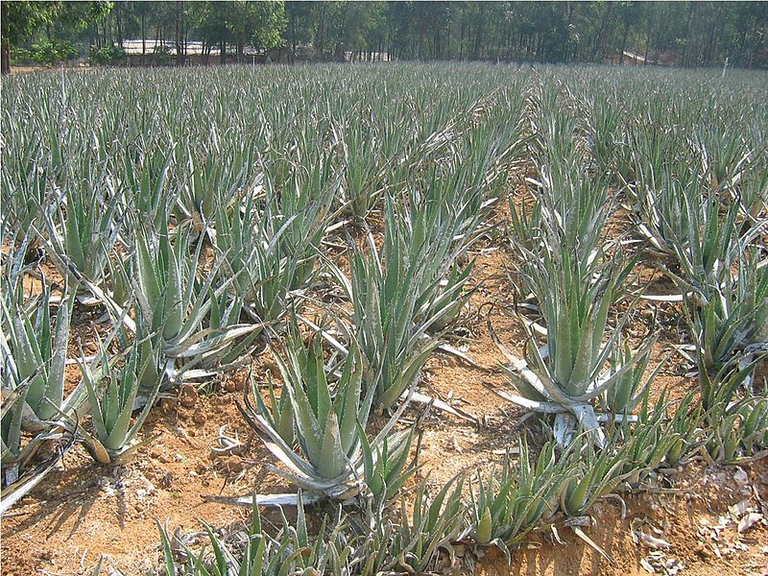
The Indians. / Los indios.
During the 16th century, Native American tribes became familiar with the medicinal plant Aloe. It was one of the 16 sacred plants, which they revered as gods. They diluted aloe juice with water and smeared their entire body with this simple mixture to protect their bodies during hard marches through swampy terrain.
This insect-repellent property of aloe was also used by the Indians to protect materials vulnerable to insect attacks, such as wood. In this way it remained undamaged for many years.
Durante el siglo 16, las tribus indias americanas se familiarizaron con la planta medicinal Aloe. Era para ellos una de las 16 plantas sagradas, que se veneraban como si fuesen dioses. Diluían el jugo de aloe con agua y se untaban todo el cuerpo con esta sencilla mezcla para proteger sus cuerpos durante las duras marchas en terreno pantanoso
Esta propiedad repelente de insectos de aloe fue utilizada también por los indios para proteger los materiales vulnerables a los ataques de los insectos, como la madera. De este modo permanecía durante muchos años sin daños.
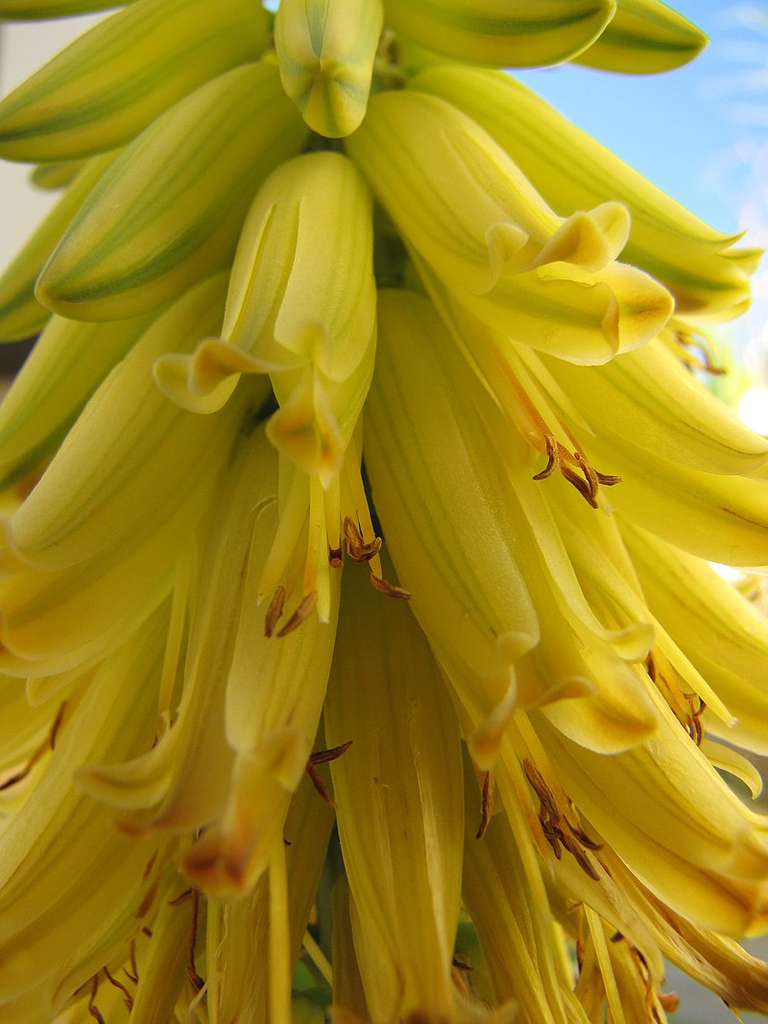
The content of this post has been, partially or totally, published on one of my blogs.
El contenido de este post ha sido, parcial o totalmente, publicado en alguno de mis blogs.


Y como siempre me despido de todos con un:
And as always I bid you all farewell with a:

Mis Blogs y Sitios Web / My Blogs & Websites: